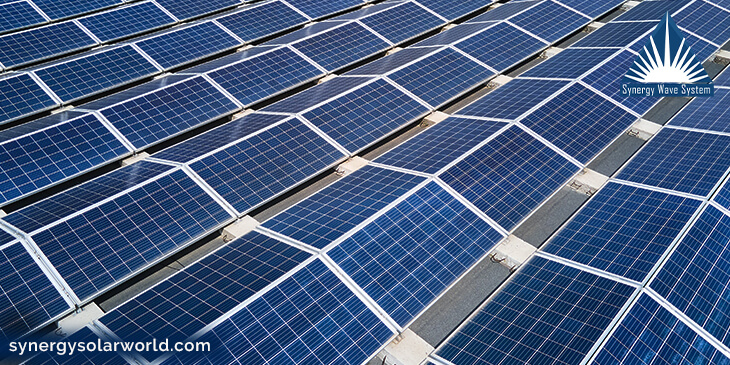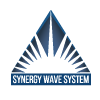Synergy Wave System

How to start your solar commercial lighting project?
How to start your solar commercial lighting project?
We are living in solar age and new technological developments increase reliance on solar energy by reducing upfront costs and increasing solar structural efficiency. Many companies understand the importance of keeping up with the technological advancements, such as offering and utilising solar solutions for clients. As a viable company offering solar solutions has the potential of attracting more household and commercial property owners to collaborate with you, thereby increasing your leads. Also, looking at the environmental world order, it seems inevitable to turn to solar as the premium solution for our present & future electricity needs. The industrial gamut and general public have come of age where they are investing in solar energy resources and looking forward to expanding its usage. Talking about a solar-powered commercial light, it can achieve the same illumination results as a traditional lighting system, with certain specifications that you need to evaluate and ensure before installing one. Now-a-days, there’s an array of options available for outdoor solar lights and advanced solar lighting fixtures from pathway solar lamps to window solar lights & many others. You name it and the market has a solar version to it.
We are sure, there are many things that you need to understand and get answers for, before you dive in to installing an advanced solar lighting system for your premises. Asking the right questions upfront will ensure any comparison between manufacturers is equal and that each manufacturer sizes or customizes their solar lighting solutions to your exact project requirements.
But why you need to ask these questions?
• To avoid overspending:
Ensure the lighting system will use appropriately-sized components for your project needs vs having an unnecessarily large and expensive system to compensate for poor design.
• To avoid battery replacements or auto-shut-off:
Install an efficient system that will be able to sustain your light requirements over the long-term vs the one that dims the light & leads to premature failure of the battery or shuts the lights off completely.
IMPORTANT QUESTIONS TO ADDRESS BEFORE STARTING YOUR SOLAR PROJECT
Q1. WHERE IS YOUR PROJECT LOCATION?
Addressing this question simply allows the manufacturers to factor solar insolation data into their system design. As different areas receive different amounts of sunlight, knowing the project location allows the manufacturers to build and specify their systems for your exact location & avoid proposing a system that is too small or large for your area. A street address can allow for the assessment of potential shading hazards like trees & buildings, which could block the solar panel from the sun and reduce your system’s performance.
Q2. WHAT IS YOUR PROJECT APPLICATION?
Project application may affect the pole height, pole spacing and light levels requirements. A street, for example, will probably require higher light levels than a trail or park. Some possible applications are collector street, residential street, boat dock, parking lot, park/ pathway, entryway to a building.
Q3. WHAT ARE YOUR PROJECT DIMENSIONS?
The size or the length of the area will affect the number of lighting systems required and uniformity of the light hitting the ground, which all factors in to the overall cost of the project. Measurements used are 2000 ft residential street, 1000 mtr pathway & 150 ft x 300 ft parking lot.
Q4. WHAT ARE THE POLE DETAILS?
Pole height may affect the number of lighting systems required for the project, whereas pole type may affect the installation costs. Eg: Common Street light height-25-30 ft, pathway light height- 12-20 ft, pole installations- bolt-down or direct burial/ embedded.
Q5. WHAT ARE THE REQUIRED LIGHT LEVELS?
Different applications require different light levels, which plays a large role in determining the overall project cost. For instance, 5 fc minutes average with 0.2 fc minimum and a uniformity of 4.0 minutes average.
Q6. WHAT IS THE OPERATING PROFILE?
This simply mean how long does the light needs to be switched on every night. It is the key aspect of a solar lighting project. Manufacturers will tune their systems differently for power management, based on the following profiles:
• Dusk to dawn (all-night operation)
• Dim in off-peak hours
• Off or dimmed at an exact time
Q7. WHAT COLOUR TEMPERATURE IS REQUIRED?
Colour temperature affects the fixture power output and can factor in to the project cost. While light colour temperature may be more of a preference than a requirement, cities are leaning more towards lights with warmer colour temperatures as they seem better for our health and the environment.
Topping the list of Solar EPC companies, Synergy Wave System provides sufficient room for addressing queries from their clients regarding any confusion related to their solar projects and partners with them in hassle-free installation of the same. Having an in-depth knowledge about these questions (when answered by a seasoned player like Synergy) will ensure your specified solar light that will meet your project requirements over the long term at no extra cost. And foremost, you could be confident that your solar lighting project won’t conk -off or die prematurely.
